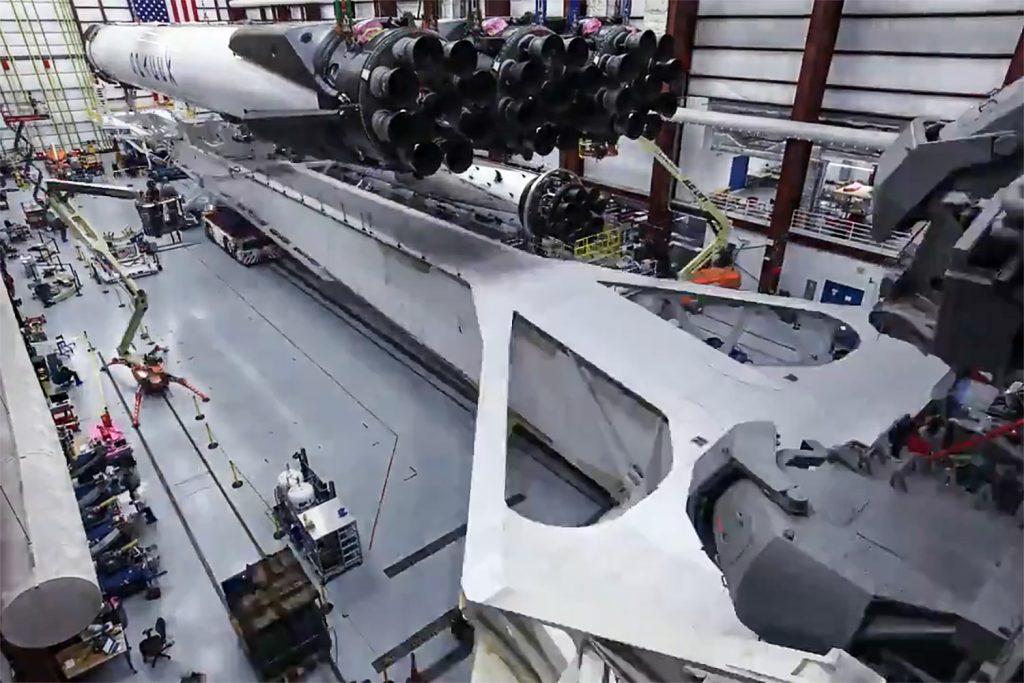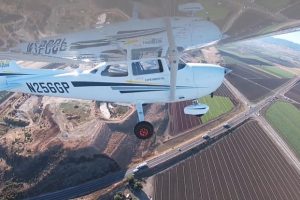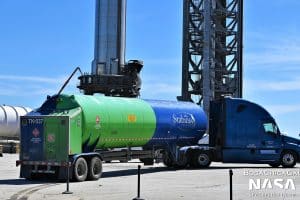For the second time in 2022, SpaceX’s Falcon Heavy rocket has a firm launch date for the first time in more than three years.
Cursed by a seemingly relentless flood of delays impacting almost every one of the rocket’s payloads, Falcon Heavy made it within three or four months of ending its launch drought as recently as June 2022. At the time, the rocket was more or less ready to begin assembly, but NASA announced late that month that the Jet Propulsion Laboratory (JPL) and supplier Maxar had failed to finish qualifying software needed to power its Psyche spacecraft. Designed to journey to and enter orbit around the asteroid 16 Psyche, the complex trajectory required to reach it constrained the mission to a launch window sometime between August and October.
When JPL and Maxar were unable to properly test the spacecraft’s software in time for that window, they were forced to stand down and wait until the next earliest window, which begins in July 2023. That left Falcon Heavy with three more possible payloads to launch in 2022, but all three were chronically delayed and there was little reason to believe that even one of them would be ready to launch before 2023. However, Falcon Heavy’s single most delayed payload appears to have made a breakthrough, giving the most powerful rocket currently in operation at least one more shot at a 2022 launch.
Continuing an excellent series of reports tracking Falcon Heavy’s never-ending US military payload delays, Spaceflight Now broke the news with an official statement from the US Space Force, which confirmed that an unspecified industry partner had finally resolved payload problems that have delayed the military’s USSF-44 mission by two years. More importantly, the USSF spokesperson revealed a specific target of October 28th.
The US military has repeatedly offered implausible launch targets for USSF-44 with little to no official explanation for the mission’s delays, making it reasonable to appraise any specific launch date much like a boy crying wolf. But this particular target, announced within the same month as its date, is a bit more believable on its own.
Thankfully, it’s not on its own. On October 7th, SpaceX sent out an email confirming that Falcon Heavy is scheduled to launch USSF-44 sometime in October and asking members of the media to register for press site access and remote camera setup opportunities. It’s possible that the rocket or USSF-44 satellites will run into issues and trigger additional delays, but a press accreditation email is about as close as one can get to a believable guarantee that a secretive US military payload is on track for a SpaceX launch scheduled more than a week or so in the future.
The mission’s next major step forward will be the assembly of Falcon Heavy inside SpaceX’s main hangar at its NASA Kennedy Space Center LC-39A pad. Photos SpaceX shared last month and earlier this month of preparations for Crew-5, Falcon 9’s eighth successful astronaut launch, show that at least two of the four main stages that make up Falcon Heavy are already inside that hangar. One of two new Falcon Heavy side boosters was clearly spotted on September 30th.



The rocket’s expendable upper stage was also clearly visible in a September 23rd photo. Ordinarily, Falcon upper stages are nearly indistinguishable from each other, but the upper stage stored behind the Crew-5 upper stage in the foreground features a unique grey band around the bottom of its airframe. In July 2019, SpaceX tested another Falcon 9 upper stage with the same grey band, which a spokesperson explained was meant to improve the rocket’s longevity in orbit.
Long orbital coasts of six or more hours are necessary for some of the most challenging launch trajectories. Direct-to-geostationary launches are the most common type of mission to require long coast capabilities and are often demanded by the US military. The grey band’s purpose is to increase the amount of heating absorbed from sunlight to warm the liquid kerosene (RP-1) fuel contained within that part of the rocket. When it gets too cold, kerosene – which freezes at a much higher temperature than Falcon’s liquid oxygen oxidizer – becomes viscous and slush-like before it freezes solid. If ingested, slushy fuel would likely prevent ignition or destroy the upper stage’s Merlin engine.
USSF-44 will be SpaceX’s first direct geostationary launch attempt, explaining why the grey band has reappeared more than three years after its first test. Coincidentally, Falcon Heavy’s third and latest launch occurred in June 2019, just one month before that upper stage test. 40 months later, the rocket might finally launch again, and it will do so by attempting what is likely SpaceX’s most difficult customer mission to date. To enable the high performance required for the mission, USSF-44 will also intentionally expend a Falcon Heavy booster for the first time. The rocket’s two new side boosters will boost back to Florida and land side by side at LZ-1 and LZ-2, but its new center core will be expended after a single flight.

SpaceX has already finished converting Pad 39A’s mobile transporter/erector, which was previously set up for single-core Falcon 9 rockets. The T/E will eventually roll inside the pad’s integration hangar, confirming that Falcon Heavy has been fully assembled and is about to be installed on the structure. The rocket will then be rolled out to the pad and brought vertical for static fire testing, a process that will likely begin at least a week before the current October 28th launch target.
If testing is successful, Falcon Heavy will return to the hangar, have its fairing and USSF-44 payload installed, and roll out to the pad one last time. Stay tuned for updates on that ongoing process.





